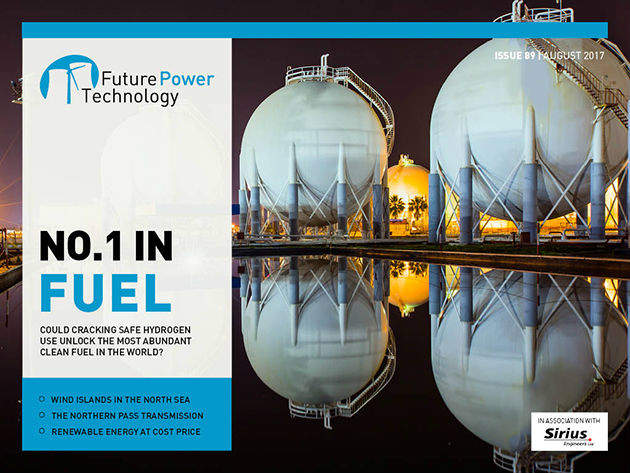

Is hydrogen a viable low-carbon fuel? A recent event hosted by DNV GL made a strong case for hydrogen fuel, highlighting current projects and technologies that demonstrate the reliability of the gas for domestic use. While most agree hydrogen has its benefits, few see enough potential to warrant changing an entire country’s gas supply from natural gas to hydrogen. But with hydrogen offering the most abundant and readily available clean energy source, is this view short-sighted and what would it take to make the change? We find out.
Plus, we assess the feasibility of the colossal North Sea Power Hub plans to build a daisy-chain of offshore wind islands, listen to the arguments around the $1.6bn Northern Pass project, which will involve laying a transmission line from Québec to New Hampshire to provide cheap electricity, and we ask if air batteries could be the next breakthrough in energy storage.
Plus, we speak to new digital-only utilities company, Pure Planet, which claims to supply power from renewables energies to UK homes at cost price and find out what’s in store for French nuclear power in following the appointment of new President Emmanuel Macron.
You can read Future Power on your iPad via our app or in using the web viewer. It's free to read and you can join the conversation on Twitter.
In this issue
It’s time to talk about hydrogen
Hydrogen is the most abundant element on earth and could provide an enormous source of clean energy. So why aren’t we using it? While there are several projects and technologies demonstrating the viability of hydrogen as a low-carbon fuel, is it incentive enough to switch an entire country’s gas supply from natural gas to hydrogen?
Read the article
Northern Pass: trouble overhead
The $1.6bn Northern Pass project aims to build a 192-mile transmission line from Québec to New Hampshire but has proven controversial. While opponents are arguing for a majority of buried power lines that would preserve the environment’s aesthetic, sponsors claim this is too expensive. So what are the considerations at play for the visual impact of modern transmission systems, and is cheaper electricity a fair trade-off for ugly pylons?
Read the article
A paradise island for offshore wind
The North Sea Power Hub is a potential new project seeking stakeholders. The concept consists of a synthetic island acting as a hub for wind power, providing up to 100GW of energy to Denmark, Germany, the Netherlands and potentially the UK. Operators say this is only the beginning, and that the future is a daisy chain of energy islands connected worldwide by underwater cables. We profile this unique project.
Read the article
A breath of fresh air for battery technology
The air all around us could provide an alternative to chemical batteries, helping store energy from unpredictable renewable power sources. Project RICAS 2020 aims to employ underground caverns to compress air, while Gravitricity is proposing underground shafts that would offer a rapid response power source. We take a look at the scope of the projects.
Read the article
Nuclear power in Macron’s France
New French President Emmanuel Macron’s election campaign included a promise to cut nuclear power generation from 72% to 50% by 2025. But rumours now suggest this may be impossible to deliver on schedule. We ask why reducing reliance on nuclear has become so important to many in France, and what this promise, if delivered, could mean for the European nuclear market.
Read the article
Renewable energy at cost price
A new digital-only utilities company called Pure Planet has launched to supply 100% renewable energy to the British market. Using a radical new model the company plans to pass energy to consumers at cost price, with no markup, using a ‘one tariff’ rate. It is built for mobile and app, and uses artificial intelligence to help provide customer service. We speak to the founders.
Read the article
In the next issue
BLDA Architects has designed offshore plant, Towers of Sun, for a stretch of sea directly in front of the Santa Monica Pier in California. BLDA collaborated with light artist Steven Scott and energy engineering firm XCO2, using solar, wind and wave power to create a design that combines energy density and stunning aesthetics. In this photo feature, we take a closer look at this vision of power and beauty. Also, we learn of a new hybrid technology which has the potential to produce unprecedented amounts of electrical power where freshwater and seawater come together on the coast, and as Trump moves the US away from the Paris Agreement, we find out which states are pursuing renewable energy independence.
We investigate Toshiba’s economic troubles which could have huge ramifications for Moorside nuclear plant in Cumbria, UK, speak to British start-up Electron about its new blockchain technology that helps customers switch utilities, and hear about affordable new CCS filters.
Digital magazine FAQ
You can read Future Power for free on the iPad. Download our app from the App Store to read the latest issue and browse the back issues in our archive. Sign up for a free subscription in the app and never miss a new issue.
You can also continue to read the desktop version for free on our web viewer. (Browser compatibility: The web viewer works in the latest two version of Chrome, Firefox and Safari, as well as in Internet Explorer 9 and 10. Some features may not be compatible with older browser versions).



